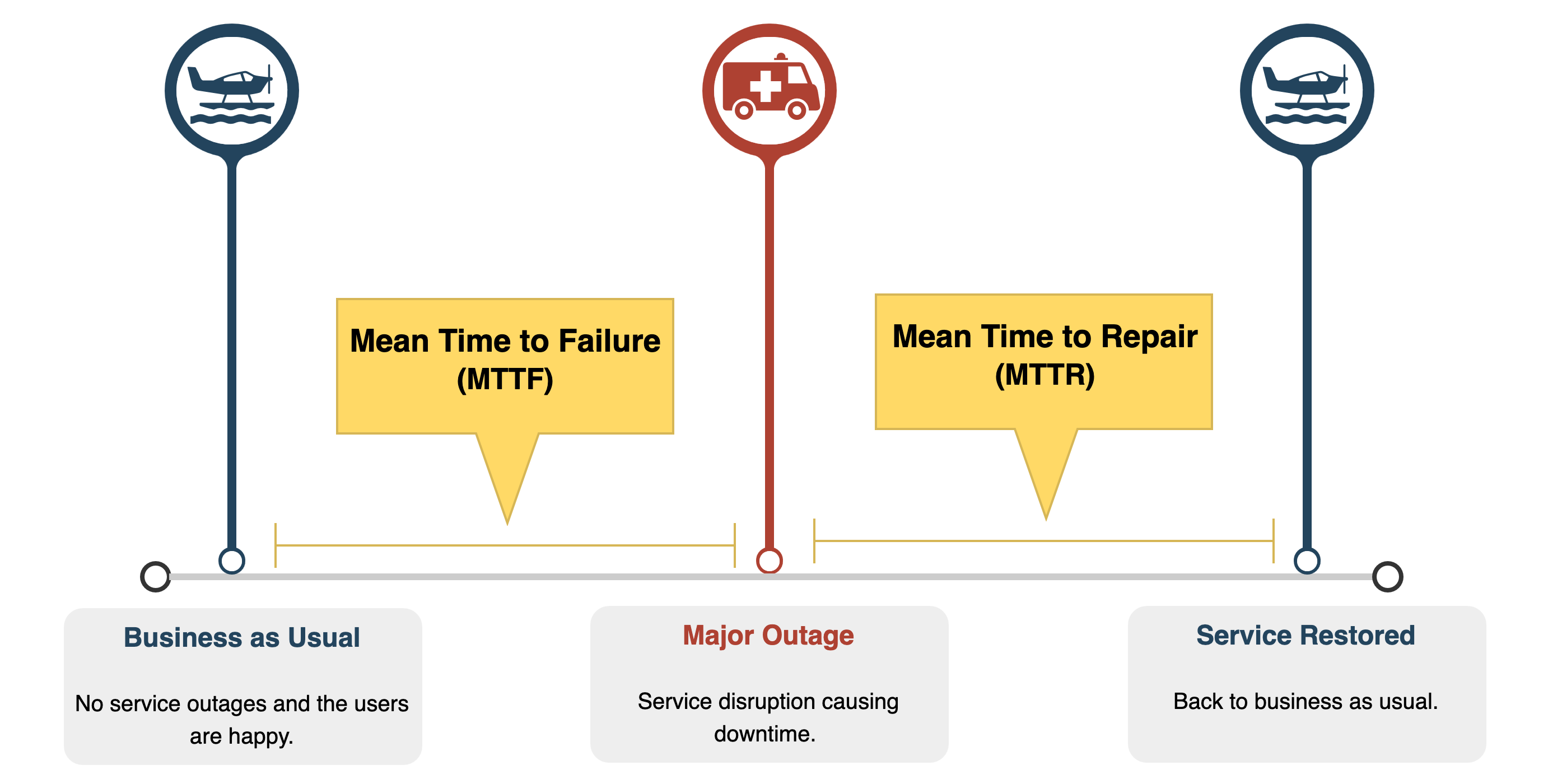· Jon Brouse · Reference · 2 min read
The Four Metrics Every Ops Team Should Track
A practical guide to understanding MTTF, MTTR, RPO, and RTO for system reliability and compliance.

Introduction
With the amount of data traversing through an organization, what metrics should staff be focused on? Determining your must-haves should start with your industry’s regulations, business agreements, and partner contracts (e.g., Service-Level Agreements).
In this post, I’ll review four key metrics that help meet common SLA components: availability and data integrity.
Availability
- Mean Time to Failure (MTTF): The average amount of time a system or component operates before experiencing a failure. This metric helps assess the long-term reliability of a system.
- Mean Time to Repair (MTTR): The average amount of time it takes to repair a failed component or system. This helps you understand how quickly operations can be restored after a failure.

Data Integrity
- Recovery Point Objective (RPO): The maximum acceptable amount of data loss in a disaster, expressed in time (e.g., “we can tolerate losing four hours of data”). This metric defines how much data your system can afford to lose.
- Recovery Time Objective (RTO): The maximum acceptable time to restore a system after a disaster. This helps define how quickly recovery must occur to meet business needs.

Closing
I’ve reviewed some of the most common metrics found in SLAs. Most importantly, you’ll need to define what your SLAs actually require. Testing your backup strategy is critical to meeting RPO and RTO objectives. Regularly verifying backup integrity ensures your organization has the necessary data to recover from a disaster.
In summary, MTTF, MTTR, RPO, and RTO are essential for understanding the performance and reliability of your systems. Defining SLAs and SLOs—and testing against them—can help teams measure and improve these metrics so the business can keep moving forward.
